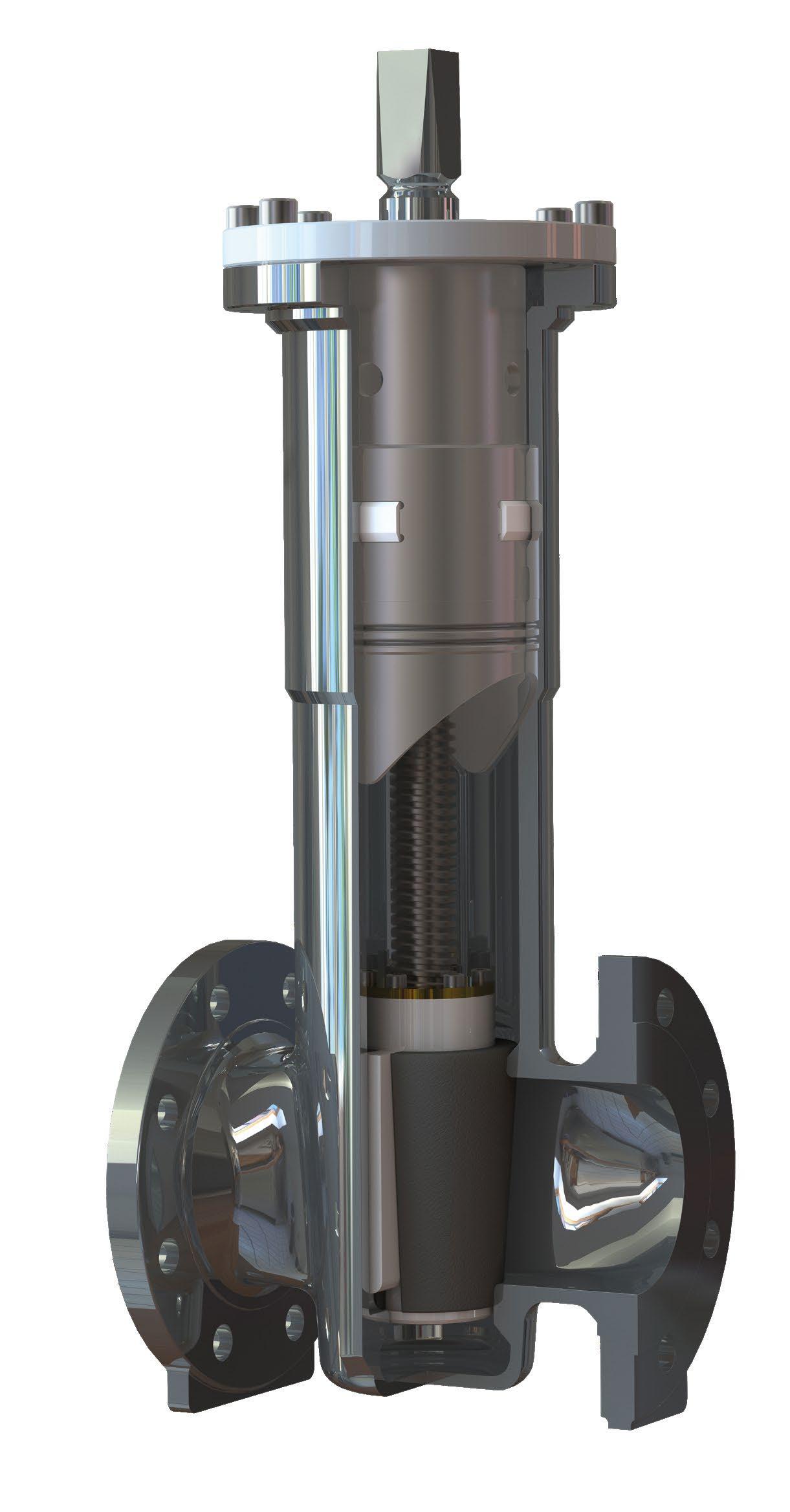



























Welcome to our Spring issue magazine, this issue has two features. The first highlights industry wide efforts to accelerate the modernisation of water utilities via digitisation, and the second profiles efforts to democratise water quality and quantity data, as well as initiatives to downscale testing and monitoring tools so everyone can understand their water-related risks.
Digital transformation of the water and wastewater industry is undoubtedly the sector-level macro-trend of the century. Faced with rising costs, increasing consumer demands, and challenges such as ageing infrastructure and climate change, the water sector is under mounting pressure to optimise and future proof its operations, and the adoption of digital tools and technologies will be key.
As digitisation accelerates, the industry is gathering huge amounts of data on everything from water quality to leakage. However, much of this data remains siloed and inaccessible, and the tools to gather it, expensive. Democratising water data - making it more accessibleaims to change this paradigm. It is an important but also contentious issue. What to share, when to share and how to share safely, are all important considerations.
In this issue, we will explore digitisation in the water sector and some of the ways that innovation is being accelerated. We will also look at solutions that exist today that help everyone understand water-related risks. The issue features exclusive interviews, fresh insights and strong opinions from some of the foremost global leaders and visionaries in the space.

Tuck in!
Siôn Geschwindt Editor
Partners
Future Water Association





Global Water Works
Responsible Flushing Alliance

SWAN
Water Mission

Publisher Abby Davey abby@h2oglobalnews.com
Editor Sion Geschwindt sion@h2oglobalnews.com
Creative Director Louise Davey louise@bluemantamedia.com

Advertising +44 (0)7817 105 258 marketing@h2oglobalnews.com
FOLLOW H2O ON @h2oglobalnews
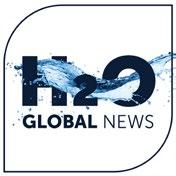
H2O Global News delivers news from around the world covering the Drinking/Potable Water, Hydropower and Wastewater industries incorporating technology, companies, legislation, the environment and case studies. The H2O Global News Magazine is published four times a year (Spring, Summer, Autumn and Winter) by Blue Manta Media Limited, Buckinghamshire, England, UK.
H2O Global News t/a Blue Manta Media Limited has used utmost care to ensure and maintain the accuracy, completeness and currency of information published on this site. We, however, take no responsibility for any errors or omission, though if notified of any we will endeavour to rectify such.
Make fast and effective decisions by empowering your team with utility-wide view and real-time performance of critical systems and assets. With digital twins, you can increase visibility to data insights, improve service levels, and mitigate risk in operating and maintaining your water infrastructure.
See the Whole Picture with Digital Twins for Water Infrastructure at Bentley.com/DigitalTwin


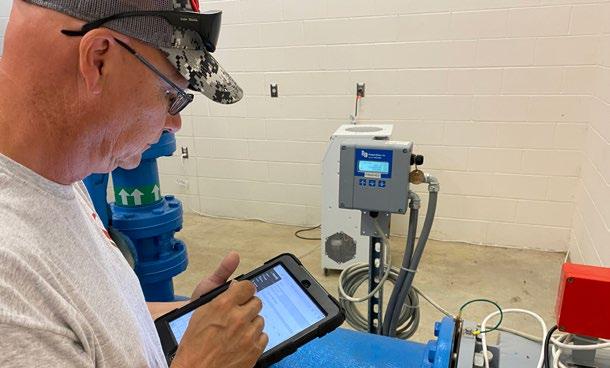







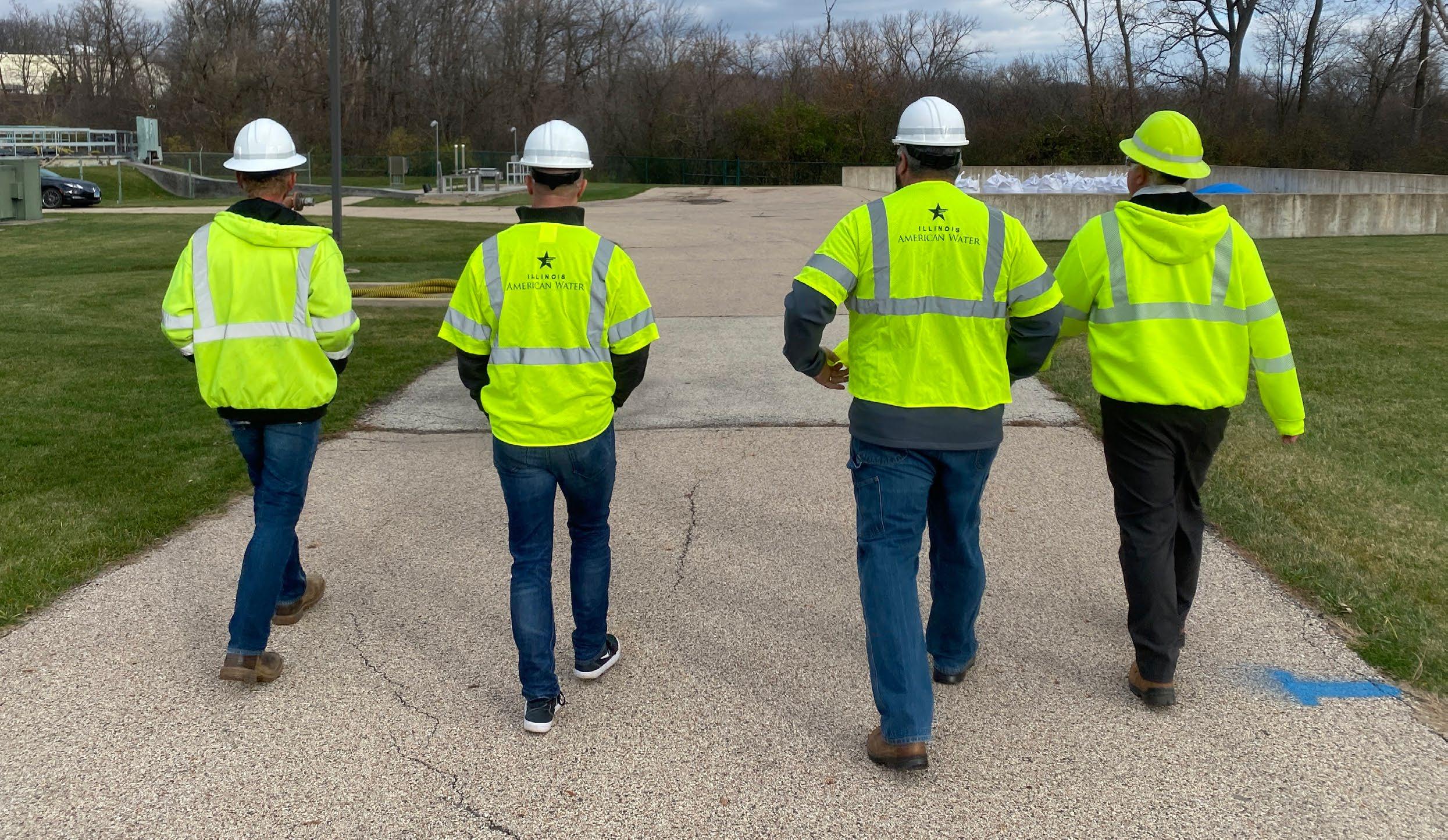
We spoke to Chris Sosnowski, CEO at WaterClick, about the work they are doing to bring the benefits of digitisation to utilities big and small.
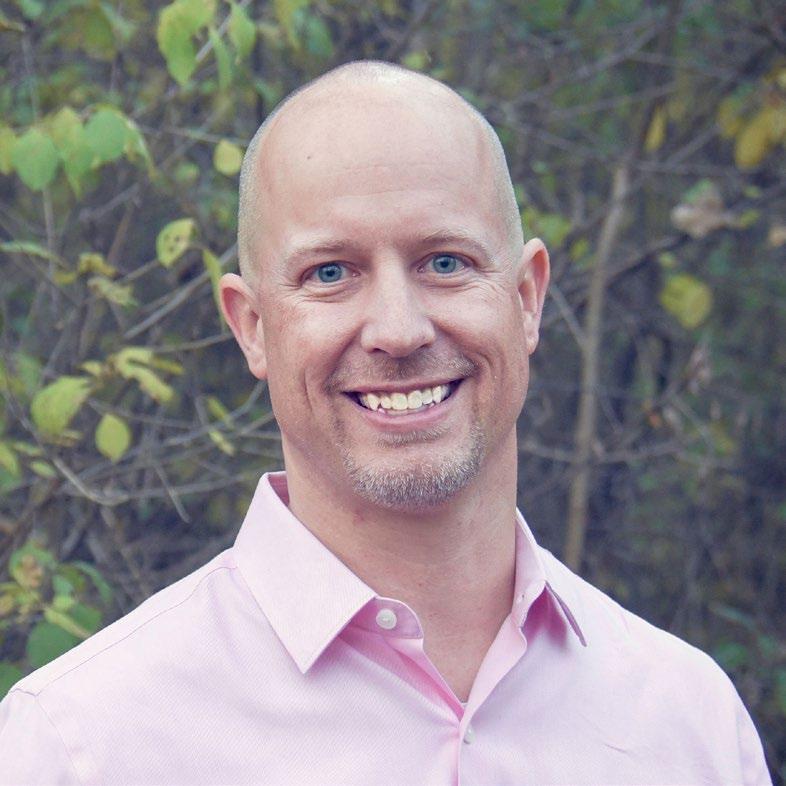
You are a former public works employee, systems integrator, and consulting engineer. What inspired you to become an entrepreneur working at the intersection of water and data?
For about 20 years, I had worked at a systems integrator, installing relatively sophisticated SCADA systems across the Midwest. They did a great job, but time after time, I’d show up at the plants months after everything was installed and working and it never failed…there would be someone walking around the plant with a clipboard telling me that no matter how great the automation was, they still needed to trust a PERSON to run a plant. It impacted me; technology should be about the people, not about gadgets. So, at the “intersection of water and data”… we think you find…operators. So we asked over 100 of them (literally) how they wanted to work with their data. We were only somewhat surprised how they thought virtually everything on the market was overly complicated.
The words simple and reliable came up over and over, and became the bedrock for what became Waterly. Instead of building an app to “teach operators how to use technology,” we built Waterly to serve operators where they are at today. Serving those stewards of water where they are today gets me out of bed every morning since.
I think the biggest challenge is leadership. Funding comes through great leadership. Mentoring comes from great leadership. Better global stewardship also comes from leadership. We can improve almost every challenge (which entrepreneurs call these opportunities) we have in water with better leadership. So I guess the problem we are solving is trying to make hard things simple for leaders in water. We take what’s complex, such as cumbersome data collection and reporting, and we
make it simple so that more people feel comfortable with change. We simplify challenges for water leaders with accessible data, from the beginning of their digital journey, to the predictive future.
We collaborate with water and wastewater utilities of all sizes as they start their digital transformation journeys. This onramp or first step often revolves around data, people and regulatory compliance at the core, as in the case when looking to move away from manual data collection (usually in the form of clipboards or endless spreadsheets). This is where we come in - Waterly is a practical, affordable and secure software built exclusively for the water sector to help collect and manage data. We aren’t folks waving a magical proprietary solution to help modernize utilities, just here to help simplify operations and address operator headaches.
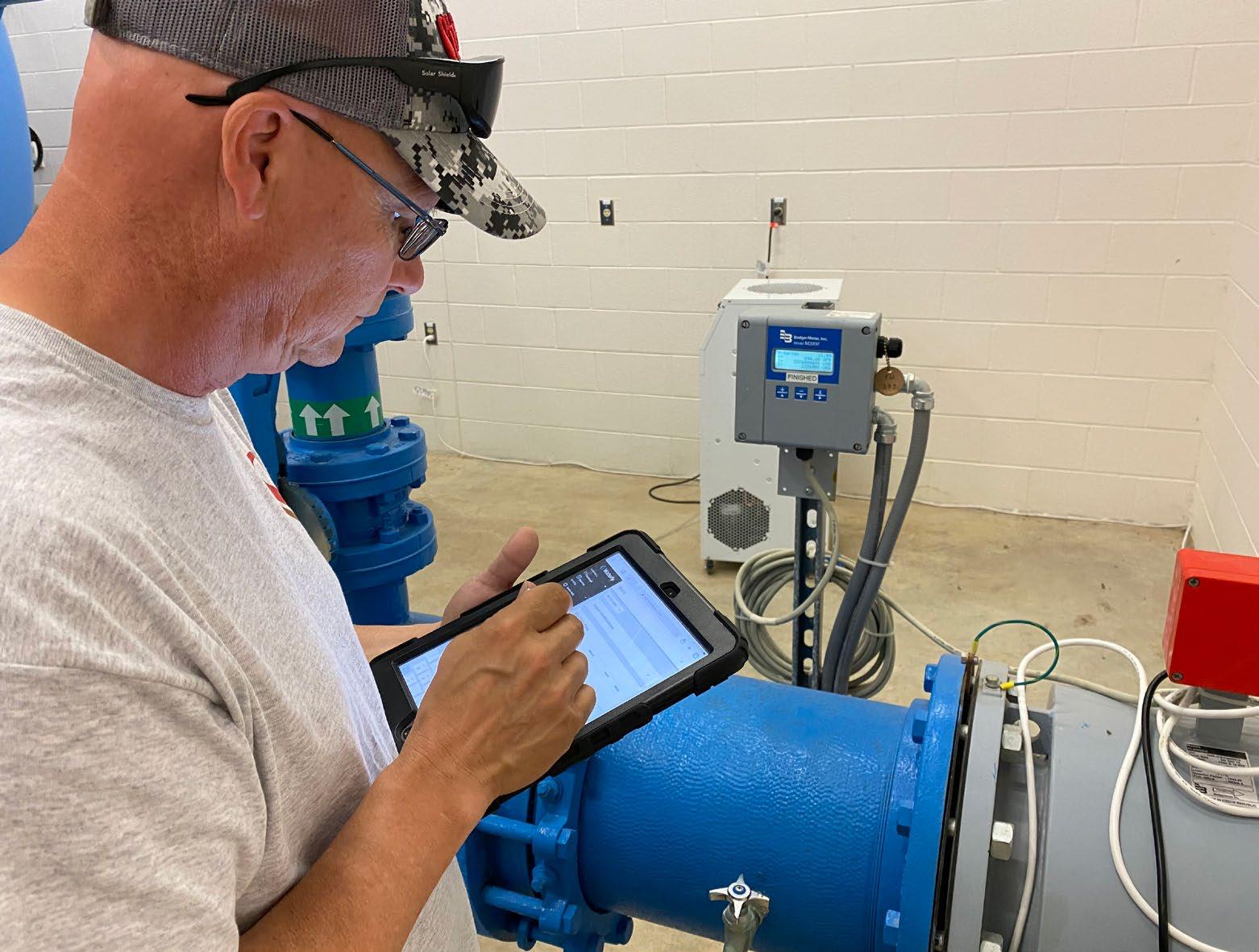
The small town of Richmond, Illinois has a population of about 2,000, and is surrounded mostly by rural McHenry County. Richmond has a small oxidation ditch-based wastewater treatment plant (WWTP) and a couple of groundwater treatment plants, each with a bit of chemical treatment at them and a small (somewhat older) SCADA system at the WWTP. They had been using the same clipboards just like tens of thousands of other towns just like them across the US. They found us when they were attending the Illinois Section AWWA conference last year. Their staff thought for sure we were probably a better fit for larger towns (which was a nice way of telling us they thought we’d be too expensive). We showed them the app running on our iPhones at the booth
and explained how we charge according to a community’s size and that we had a WaterClick partner that could connect to their 15 year old PLC and push data into Waterly. Their Public Works Director and Crew Leader were both there and were convinced they could make it work and they signed up the next day. We then interviewed them to learn how they operate, as they walked us through their clipboards and explained what type of data they report on. We got some technical information from their systems integrator, then built their app and turned them loose. Honestly, it took them a bit of time to warm up to ditching the paper (change is still hard for everyone), but now the guys there say it’s “pretty slick” and “supereasy…even for us non-tech savvy guys.” No more clipboards. No more spreadsheets. The crew leader saves hours of not having to “monkey around with the spreadsheets’’ each month.
With digitization and technology advancements often come concerns related to cybersecurity, affordability and continuity. How do you address these when working with both existing customers and during outreach efforts to new communities?
Many small to medium size communities don’t
Continued on page 6
realize what some of these concerns involve. We really work hard to make things simple for them from the very onset, even pre-onboarding. In this way, we take care of problems they don’t even know that they have. In terms of affordability, we transparently charge according to utility flow rate, so we make it affordable for utilities of all sizes. On the continuity side, we maintain relationships with our communities through regular trainings that are core to our offering and commitment to water stewardship.
Waterly is the onramp towards digitization centered around software-based regulatory compliance, while WaterClick is the connecting bridge helping communities move beyond that initial step through simple, direct integrations between Waterly customers and fully vetted partners. This provides expanded data capabilities for water and wastewater utilities as they look to address pressing challenges related to SCADA connectivity, power data monitoring, lab data, hydraulic modeling, and beyond. We remain humble and know we can provide further value through these types of collaborations by carefully vetting partners for communities.
In fact, utilities have so much in common, but just don’t know it. We help convince operators that they can use the same shared model of managing data and we make it simple for them. Whether they are collecting data by hand, getting it from a lab, or bringing it in from SCADA or a new IoT sensor, we bring it all together quickly and inexpensively using a shared data model.
We hear industry folks say that utilities are risk averse, slow to adopt technology, and lacking budgets to help them modernize their water operations. What’s your point of view on this?
I often hear folks on stages repeat this over and over, but to me it honestly sounds like a lot of whining without a course of action. Companies that struggle to help people where they are often are the ones complaining that other people don’t change. If people don’t want to change, it’s our job (as solution providers) to change for them, not shame them into submission. In my mind, adoption challenges are the result of a number of key issues, namely: (1) Overcomplicated technologies,
whether by design or how they are marketed; (2) Proprietary or expensive hardware/software that is not within the means of the mass US water utility market; (3) Long, if not super long onboarding times to deploy technology from the moment there is interest in your product; (4) Security of systems put in place; (5) Lack of adequate training to support technology deployment.
You have been scaling impressively, with Waterly active across 1,000 sites in the US. Putting this success on the side, what has gone a bit slower than expected?
We are fortunate to be able to work closely with both ultra-small systems with a few dozen connections to a number of very large communities across the US. Balancing the personal touch with the drive to standardize and digitize our own processes is extremely challenging. We will never lose touch with caring about the operators, and that means we need to grow our team (not just our technology) along with our customer base; hiring great help is hard. Additionally, while our WaterClick partner network is growing, it’s been challenging finding companies that can scale down to serve the smaller systems with their existing business models. Everyone wants to do it, but the economics don’t support it in many cases. It’s been frustrating digging through the haystack to find the needles, but there’s great joy in bringing all of these systems extremely high value solutions for an affordable price.
What’s one book that inspired you as both a founder and self-proclaimed ‘Chief Bottle Washer’ and why?
What one book? So difficult, but the first that came to mind is Servant Leadership by Robert Greenleaf was pivotal in my career and inspirational as a founder. Some of the books I read are over 500 years old, so I can’t quite call a book from the 70s an “old” book, but the principles in there are timeless. The Servant as Leader thinking by Greenleaf taught me the “first among equals” concept that helped to set my approach to how I lead in every aspect of life. Ask our employees, I work for them and not the other way around. As a father, a husband, and a leader, I will always strive to lead as a servant.
(Front cover image as Chris Sosnowski, CEO at WaterClick)
Jessie Mahr, Director of Technology at Policy Innovation, discusses the progress states have made in developing water service boundary data, the importance of this data for communities in managing water-related risks, and how it can be used to guide investments to address environmental justice concerns.
There are nearly 50,000 community water systems in the United States that serve 90% of the population, yet no national resource exists to identify the people who are served by each system. By contrast, we have maps of every public and private building in the United States. We have maps of national park boundaries. We even have maps of the entire electrical grid and all the primary and secondary roads across the US.
Despite the importance of water to health, safety, economic mobility, and overall well being, we do not have a comprehensive, accurate map of who those systems serve. We shouldn't have to wonder "who is responsible for my water?" - we should know.

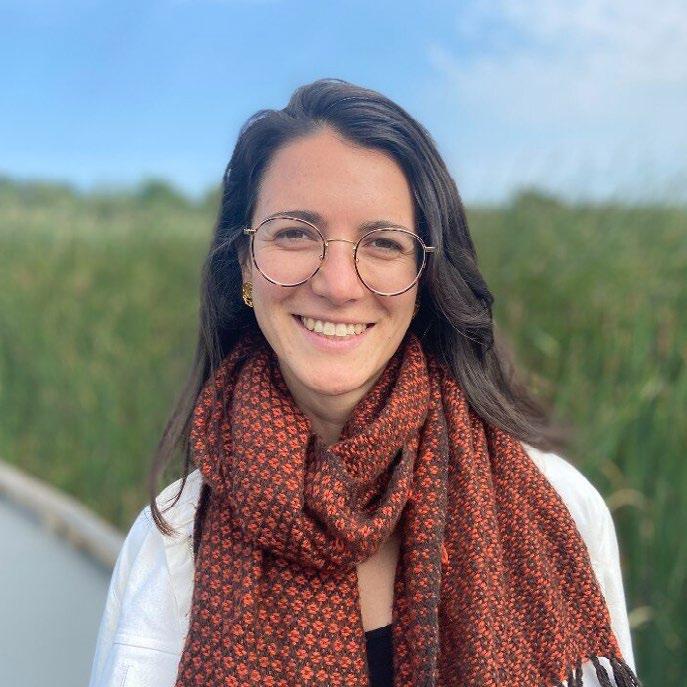
Without accurate service area boundaries individuals cannot easily determine who is responsible for the water they drink at home, at work, at school, or at play. As a result, individuals struggle to determine where their water comes from, what contaminants are present in their water, or what is being done to protect the water. They may miss out on important health notices, opportunities to participate in rebates or other incentive programs.
Further, federal agencies do not have necessary information to ensure that funding programsincluding the IIJA (Infrastructure Investment and Jobs Act) - consider social, economic, racial and ethnic demographics and advance Justice40 goals - the Biden Administration’s promise to ensure that
Continued on page 8
In collaboration with SimpleLab (SL) and the Internet of Water (IOW), EPIC created the first national map of who gets drinking water from who. To do so, we collated data from the 17 states and District of Columbia that make the data publicly accessible, and then created the data based on complementary datasets to make best-available estimations. The map above depicts the breakdown on a state-by-state basis and highlights where additional work is needed.
at least 40% of federal climate investments go directly to frontline communities most affected by poverty and pollution.
But it’s not all bad news. Seventeen states and the District of Columbia currently have publicly available service area boundary data that they have collected for a plethora of uses, which shows this is a solvable problem. The question is: how can we ensure all states have such data to improve the design and implementation of water infrastructure, rate design, drought planning, and environmental justice?
While the creation of service area boundaries often starts with one particular program, the work has cascading, long term benefits for many aspects of water management and public health.
We interviewed leaders from four states - New Mexico, North Carolina, Utah, California - to understand how they developed this critical dataset. We asked them why they collected and shared service area boundaries, what agencies were involved in the initial development and ongoing maintenance, how the work was funded, what policies were used to collect data, and how each state worked with local communities.
What we learned is that there are many uses for accurate and accessible service boundary data. States named how helpful this data set is for the following applications:
• Projecting populations to estimate future water supply and demand (UT, NC);
• Estimating domestic well use in areas not served by community water systems (NM);
• Evaluating alternative water supply options (NM, CA);
• Assessing climate change variability, including wildfire impacts on water supply (NM, CA);
• Connecting water quality information to income and demographic data to inform grant eligibility and prioritize State Revolving Fund allocation (CA);

• Inter-agency collaboration (UT, NC);
• Facilitating academic research (UT, CA, NC); and
• Public interest (UT).
However, beyond just the state agency use case, we’ve connected with tribal and community leaders
as well to better understand how this data could be useful in their drinking water justice efforts. Our colleagues at the Oregon Water Futures Project, a collaborative effort between water and environmental justice interests, Indigenous peoples, communities of color, low-income communities, and academic institutions, commented:
“Community members care deeply about our shared water resources and have extensive knowledge and experience to contribute to achieving Oregon’s water justice goals. Having such information would help communities know where their water came from, how they were being charged, if wells were drying up, and if that water was clean for cleaning, cooking, drinking, and washing.”
Although critical clean water and wastewater infrastructure is a pillar of the Justice40 initiative, there is not yet data in the tool that represents who has access to safe, reliable and affordable drinking water. This is in part due to the fact that we do not have a national understanding of who gets drinking water from who.
In partnership with the Internet of Water, we evaluated eleven states that do have drinking water service area boundaries to see how including a metric that shows health-based drinking water violations would influence funding prioritization and help better target resources to communities that lack access to safe drinking water.

In our eleven-state example, 11% of census tracts (2810) receive drinking water from a system violating health standards. Roughly a third of these tracts (959) are also low-income, and 67 of these low-income census tracts are not currently identified by any other environmental metric used in the Climate and Economic Justice Screening Tool.
We then decided to dive deeper, using Texas as an example, to understand how often those systems with health-based drinking water violations were receiving funding to address concerns. We found that where health-based violations have been funded, only one system serves an area where more
than 20% of the communities are considered disadvantaged.
By equipping policy makers and program managers with this type of information, we are able to more accurately identify water systems most in need of additional funding to address drinking water violations for underserved communities. This is a start, but there is more work to be done for this to be comprehensive across the US.
For now, we were only able to do this analysis for a handful of states. While we have made important strides in improving both the scope and quality of service area boundaries data - we now have an accurate understanding of where more than half of the US population gets their drinking water from! - extending it to all residents requires support and collaboration from local, state and federal government agencies, as well as community-based partners.
Now is the time to build out the data and digital infrastructure to understand who lacks access to safe, reliable and affordable drinking water so we can properly prioritize outreach, engagement and support to communities that have historically been left behind, and ensure we can meet (and exceed!) our Justice40 goals.








We caught up with Sivan Zamir, Vice President, Xylem Innovation Labs, to find out more about the programme and how Xylem is accelerating innovation in the water industry.


Xylem’s mission to ‘solve water’ supports innovation that is critical to mitigating the impacts of climate change and to the future well-being of society. Innovation can come from anywhere –from within Xylem’s extensive R&D teams to entrepreneurs all around the world. The desire to partner with innovators worldwide to bring to market the most promising of water technologies spurred the launch of Xylem Innovation Labs in late 2021.
Each stakeholder group in the value chain of developing and commercialising new technologies has particular areas where they excel. In Xylem’s
case, we convene partners to find new ways to solve the toughest problems… and support them through global reach and local experts. We have three ongoing programmes that allow us to do that in a targeted way. The first is our Open Innovation programme, where we partner with the innovation ecosystem to stay abreast of the latest technologies and trends and assist in evaluating over 350 technologies each year technically and commercially. Through our Technology Incubator programme, we work with early-stage startups and universities to develop their technologies and gear them towards commercial readiness. We also work with later-stage companies through our
Continued on page 12
Commercial Accelerator programme, which helps bring products to market that we’re well positioned to support.
The stakes are high with the rapid rate of technological change and the effects of a warming planet set to only increase. While these programmes are frequently seen in other industries, this is rare in industrial markets. Xylem Innovation Labs allows us to stay ahead of the innovation curve by bridging the gap between large water companies and third-party innovators.
The Xylem Innovation Labs team focuses its work and partnerships across key areas that represent the biggest pain points and opportunities for Xylem’s customers and communities. Right now, these are issues related to decarbonisation and sustainability, the digital workforce, advanced industrial treatment solutions and initiatives that help our customers meet regulatory compliance.
Following a successful inaugural year, we recently welcomed a second cohort of startups into our Commercial Accelerator programme, commercially oriented to bring new technologies to market. Throughout the nine-month program, startups are matched with Xylem mentors, attend a series of virtual and in-person workshops about how to partner with a large company to scale their businesses, and design and run a commercial pilot project with a Xylem customer.
It’s all about demystifying collaboration for a

common cause. We drill down to the basics— Sustainability and ESG goals, IP considerations, manufacturing and supply chain, global sales channel management, and more—to bring commercially viable products to market faster.
Our innovation ecosystem is also strengthened by our partnerships with global entities that share our goal of advancing technological breakthroughs and solving water. Last year, we were the headline sponsor of the Trial Reservoir, a private revolving loan fund started by Isle Utilities, a global water consultant and tech scout for municipalities. They have an innovative business model that solves the problem of financing pilot demonstrations so that municipalities can adopt new technologies faster. Last year’s focus was on decarbonisation, and this year we are excited to continue our work together and remove market and capital barriers related to another complex area of the water cycle: advanced industrial treatment.
There’s a real need to address climate change issues strategically and with purpose. We can talk about wanting to change things, like aligning culture to drive innovation, but we cannot rely on intentions alone. There are a lot of stakeholder groups involved—OEMs, EPCs, entrepreneurs, investors, utilities, municipalities, universities, consultants, distributors—and while shared purpose can be our motivator, there needs to be aligned incentives as individuals, teams, and companies so we can progress in lockstep as an industry.
Another challenge to central innovation programmes is the traditional inside-out approach. We’ve flipped that around, taking an outside-in approach to innovation that starts with the customer. Based on customer needs, we work hand-in-hand with colleagues across Xylem to identify and leverage innovative solutions that we can jointly accelerate to market through Xylem’s resources and reach. This work demonstrates to the industry what’s possible when we see each
other less as competitors and more as cocollaborators on a path to achieving water security.
Companies like Xylem are well-positioned to accelerate water technology within the broader ecosystem – not only from a cultural perspective, but from a size and resource-based perspective as well.
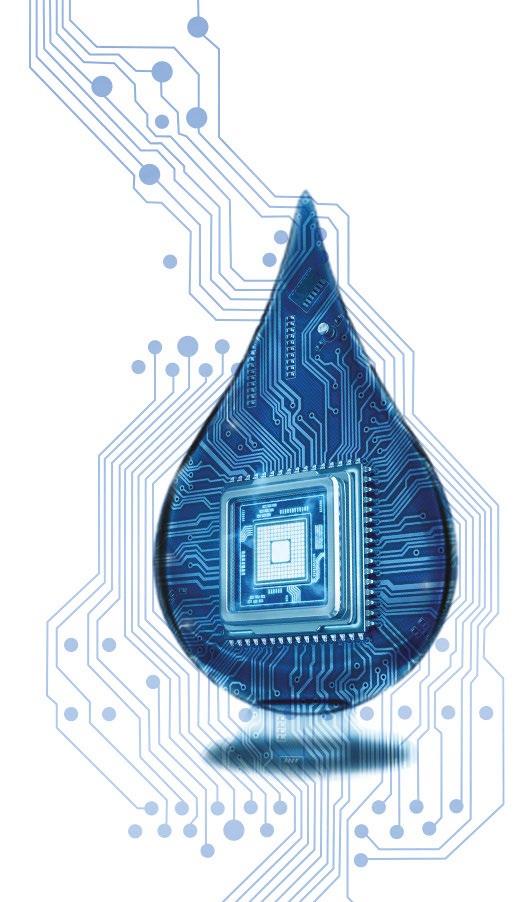
As a two-time startup founder, I’ve been on the other side of the equation. Too often, promising technology from startups and entrepreneurs gets discounted based on factors such as cost or the ability to support more than a handful of customers simultaneously, which ultimately makes the journey to commercialisation that much more difficult. Simply determining the best business model or accessing the beachhead market for the technology’s roll-out can be hard for a small startup with limited time and budget.
This is where large, established companies excel. We can quickly look at different geographical
markets and verticals to gain an understanding of where the technology fits best. It’s then relatively easy for us to adjust business models based on our wealth of knowledge and experience, which paves the way for the biggest and most strategic solutions-oriented impact of the technology.
Central to Xylem’s open innovation programme is the belief that good ideas can come from anywhere. We will continue to strengthen the interconnectedness of the water sector and collaborate with early to late-stage startups and companies bringing amazing new ideas to the table. We will also look to other industries to keep a pulse on technology trends and adoption that might apply to water. Augmented reality, for example, or any other technology that is disrupting the status quo in other industries is where we want to be digging in further and exploring. In the end, by supporting the passion and ingenuity disruptors possess, we can create the perfect mixture of resources and diversity of thought that drives real change.
• Electrolytic In-Situ Reagent Generation Systems
• Solutions for Inorganic & Trace Metal Contaminants
www.aquametrologysystems.com

The climate crisis is accelerating and pressure is mounting on industries to decarbonise. As one of the most energy and chemical-intensive industries on Earth, the water treatment sector has a pivotal role to play in the reduction of greenhouse gas (GHG) emissions.
The good news? The water treatment industry has committed to deliver on the sustainability goals of Water 2050 that calls for a significant reduction in GHG emissions to support the fight against climate change. The not so good news? The industry is grappling with a legacy of inefficient, outdated treatment plants that use A LOT of energy and chemicals, leading to direct and indirect emissions: the water treatment sector is currently the fourth largest industrial carbon emitter.
While new treatment facilities will surely be built with a focus on reducing carbon footprint, the reality is that the industry is sitting with an existing stock of treatment plants that simply weren’t designed with climate in mind. But this doesn’t mean the industry has to tear down all of these plants and start again. There is a better solution: upgrade, retrofit and optimise existing facilities with intelligent water monitoring and treatment solutions.
Real-time water monitoring helps water managers optimise the entire system, resulting in less energy and chemical use, and therefore, less emissions. Early adopters of real-time water quality monitoring in the industrial and municipal sectors have provided irrefutable evidence of the immediate impact these technologies can have on reducing the GHG emissions of existing treatment plants. The impact of online water quality analysers can be boosted further when paired
with intelligent water treatment systems like Aqua Metrology Systems’ SafeGuard™H2O.
SafeGuard™H2O generates ferrous or stannous based water treatment reagents on-site and on demand, reducing the need for bulk toxic chemicals like ferric salts, organosulphide and ozone, which produce substantial emissions across their supply chain. In conjunction with real-time monitoring, the SafeGuard™H2O system can ensure that water doesn't need to be retreated - cutting emissions even further.
By integrating real-time analytics and monitoring with intelligent water treatment, treatment works can significantly reduce their overall operational carbon footprint. By upgrading their facilities instead of building new ones, operators also prevent embodied carbon emissions.
The benefits extend to all areas of treatment plant operations too. The efficiency gains enabled by real-time insights and intelligent water treatment allow operators to reduce net water intake, improve compliance and reduce pollution downstream. Overall, it saves utilities time and money and helps them contribute to a positive water future where negative environmental impacts are minimised.
The water industry has a long journey ahead to decarbonise its operations while ensuring the safe, affordable provision of water and wastewater treatment services. As the climate crisis worsens, the industry doesn’t have the privilege of time - it must act swiftly to implement available and proven decarbonisation technologies right now. One thing is for sure, without the broad implementation of online water quality analysers and intelligent treatment systems, meeting the goals of Water 2050 is unlikely to be realised.


In a world where the interdependence of human health and environmental integrity is increasingly clear, the quest for pristine drinking water quality data has never been more crucial. As the lifeblood of our very existence, water, flowing with a wealth of information, holds the power to unveil hidden stories of our planet's health, our local environment, and our control over our bodies most vital functions.
Indeed, the public narrative on water quality seems to be on an ever-reaching quest to terrify you away from tap water. From coverage of well-known risks like lead, arsenic, uranium, and bacteria in the water to new and esoteric contaminants like water-borne viruses, pharmaceuticals, PFAS, Dioxins, microplastics, and beyond.
But where is this water quality data? Why is it that if you go looking for actual data (numbers, dates, locations, concentrations) about your tap water quality in 2023, you’ll find it nearly impossible to obtain timely, useful answers?
Now. Instead of waxing poetic on the virtues of water quality data and repeating century-old idioms of managing what you measure, I want to take a different tack, offering instead a more pragmatic perspective. Let's “follow the money” to find out who thinks water quality data is valuable, and why. If we want to democratize water quality data, we first have to understand where value is being created with this data, who has access to it and who doesn't, and where access is needed most. People showing up to pay today are early adopters of water data who point us in the direction of where water quality data transparency and democratization can have the quickest impact. It's one step forward on the path toward aligning water data democratization with the greatest need.
But first, what is SimpleLab? And what business do we have sharing such a perspective?
The shortest answer is that we are a third-party environmental testing logistics provider and marketplace. SimpleLab ships water quality test kits, tracks them throughout their chain of custody and reports back lab results to everyone with the right permissions. Water quality testing campaigns are a specialty of ours, and with a growing pattern of environmental risks, our warehouses and project managers are getting busier. Today, SimpleLab manages distributed sampling logistics for 175 water quality testing labs and 4,000,000 testable environmental contaminants.
As a customer ordering from SimpleLab, you get a seamless, private, and digital user experience for all your environmental lab testing needs. Some customers order just one test kit for home, others order 20,000 kits through the API. You can order testing for almost everything imaginable under one roof–from lead to PFAS, pharmaceuticals, microplastics, and even rare amoeba that can infect your brain (fun).
Continued on page 16

By providing people with access to environmental labs, we’re giving people insight into their water quality at the point that it matters most–at the tap in their own homes. This is the most granular level of water quality data democratization. As a result, we’ve created the largest and most unique dataset of private, point-of-use water quality data nationwide. Along the way, we have learned a thing or two about what this data means and why it's so important for the world to collect more of it. People need this data–and its interpretation–to make critical decisions about water treatment in their homes, to respond to environmental disasters, and to build trust in their water utility.
Let’s face it–household-level water quality data is still expensive. The combined cost of labs and materials and shipping means that not everyone can afford a test. That’s why we’ve worked to democratize publicly collected water quality data that is otherwise trapped behind government FOIAs in a free, public water quality data platform called City Water Project. People wanting to know “what’s in my town’s water” can get a clear, data-driven answer from this site–no water chemistry degree or purchase is needed.
At a policy level, water quality data is needed to make decisions. Biden’s Infrastructure Law is directing $50 Billion toward water infrastructure improvements, with an emphasis on underserved communities. This money can’t be allocated with environmental justice in mind if we don’t know which communities are served by which systems. This is why we’ve created an open-access map and data on where water systems are located and who they serve because this data has historically been siloed in state databases or is entirely unavailable. Working in collaboration with nonprofits on this open-source project has sparked new collaborations and public-private partnerships to understand which communities have the worst water quality issues.
We’re witnessing a demand for both granular-level water quality data and big-picture, nationwide information about water and infrastructure. So, where’s this
demand really taking off? We’ve followed the money, and here’s our take on the changing profile of water quality data buyers from 2022 to 2023.
Selling better solutions to residential customers concerned about their tap water:
[1] Residential & commercial Plumbers
[2] Residential Home Inspectors
[3] Water filtration companies
[4] Well drilling companies
[5] Hair and beauty product companies
Addressing public concerns about environmental health risks:
[6] State of California
[7] Local city government
[8] Amusement parks
Meeting regulatory requirements
[9] Aquariums
Selling better solutions to customers
[1] Faucet manufacturers
[2] Affiliates and influencers on social media
Facilitating regulatory requirements:
[3] Lead service line identification modeling analysts
[4] Data and mapping companies
[5] State EPA and public environmental justice leadership
[6] Industrial manufacturing
[7] Engineering consulting firms
Addressing public concerns about environmental health risks:
[8] Environmental disaster communications specialists
[9] Local and regional non-profits
In short, this list tells you where the value of water quality data is manifesting. In particular, I think it shows an increased appetite for water quality data among entities facing new regulations. This is particularly true in light of EPA news concerning LCRR and PFAS regulations. Moreover, the train derailment in East Palestine, Ohio shed light on the impoverished state of water quality communication practices of local and national leadership. Additionally, we think that there is a bit of a snowball effect taking place. Two years ago, nobody knew SimpleLab HAD water quality data and the means for accessing it was still buggy and simplistic (at best). After a few years of a growing user-base, SimpleLab water quality data has a broader reputation and access is easier so more clients are inquiring from tangential sectors.
Does it mean there aren’t other more socially beneficial or climate-laden purposes for water quality data? No, there certainly are. But when you try as hard as we do to generate, collect, clean and make available more water quality data than anyone else from public and private sources, you get to know the people who will pay for it pretty effectively.
Lets answer this with one more list, if we get into the details of explaining why this article will never end. Reach out and ask if you’re interested in learning more.
[1] Regulatory groups evaluating distribution system water quality
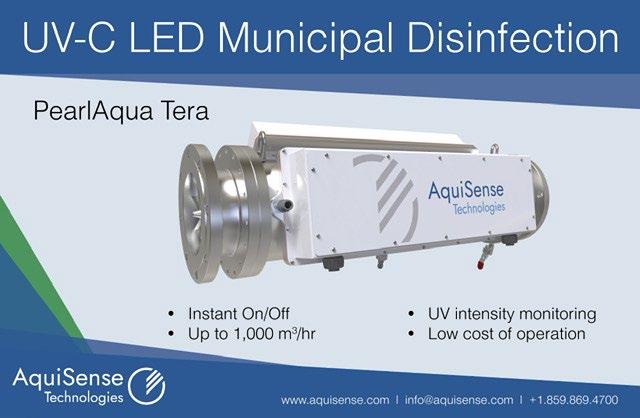
[2] Field sensors and on-site testing device manufacturers
[3] Farming and agricultural technology
[4] Food and beverage companies
[5] Law firms
[6] Insurance underwriters
[7] City planners
Johnny Pujol, CEO | SimpleLab

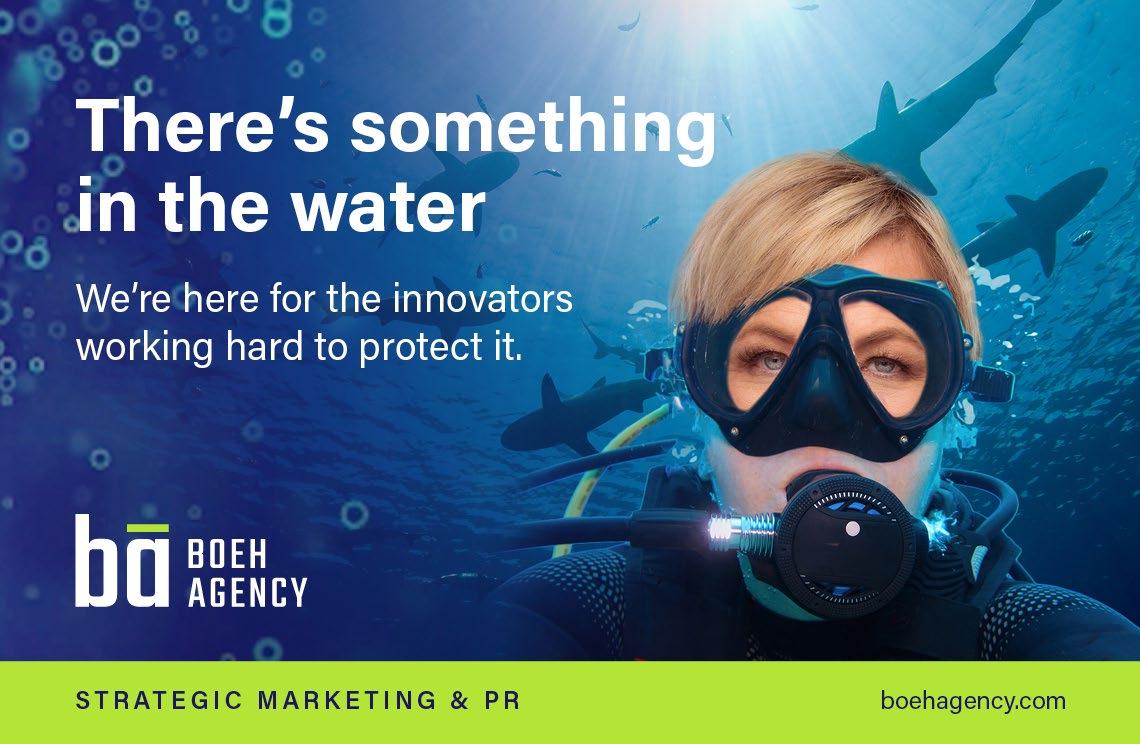
AquiSense Technologies developed the world’s first UV-C LED product for water disinfection 8 years ago and has focused on perfecting this technology in the commercial and residential markets ever since. They have now taken this technology to the next level with the roll-out of PearlAqua Tera – North America’s first-ever UV-C LED disinfection system designed for municipal and industrial markets.
While UV LED disinfection has been lauded for its benefits, many believed that it was impractical to deploy this technology at the municipal and industrial scale. But with the PearlAqua Tera system set to be installed in at least 7 additional locations this year, AquiSense has proven that it’s not only possible, but scalable.
UV water treatment kills most water-borne viruses and bacteria, and by using LEDs, AquiSense can offer units that are more robust, affordable, and mercury free. Even though it services much larger operations, with flow rates up to 6 MGD, the PearlAqua Tera offers the same operational benefits that small systems do and provides chemical-free disinfection in a compact, self-contained unit.
The PearlAqua Tera offers a remote I/O interface for advanced analytics, allowing users to monitor UV intensity in real-time and access actionable insights on system performance. With instant on/off capabilities, unlimited on/off cycling and low maintenance, the PearlAqua Tera provides extended treatment without extra cost. The system also contains a replaceable LED lamp which features stable UV-C output power and advanced cooling which optimizes consistency and lifespan.
AquiSense is proud of their continued progress and development of this new system. Bringing this technology to the municipal and industrial markets allows for millions of people to have easier access to clean drinking water.
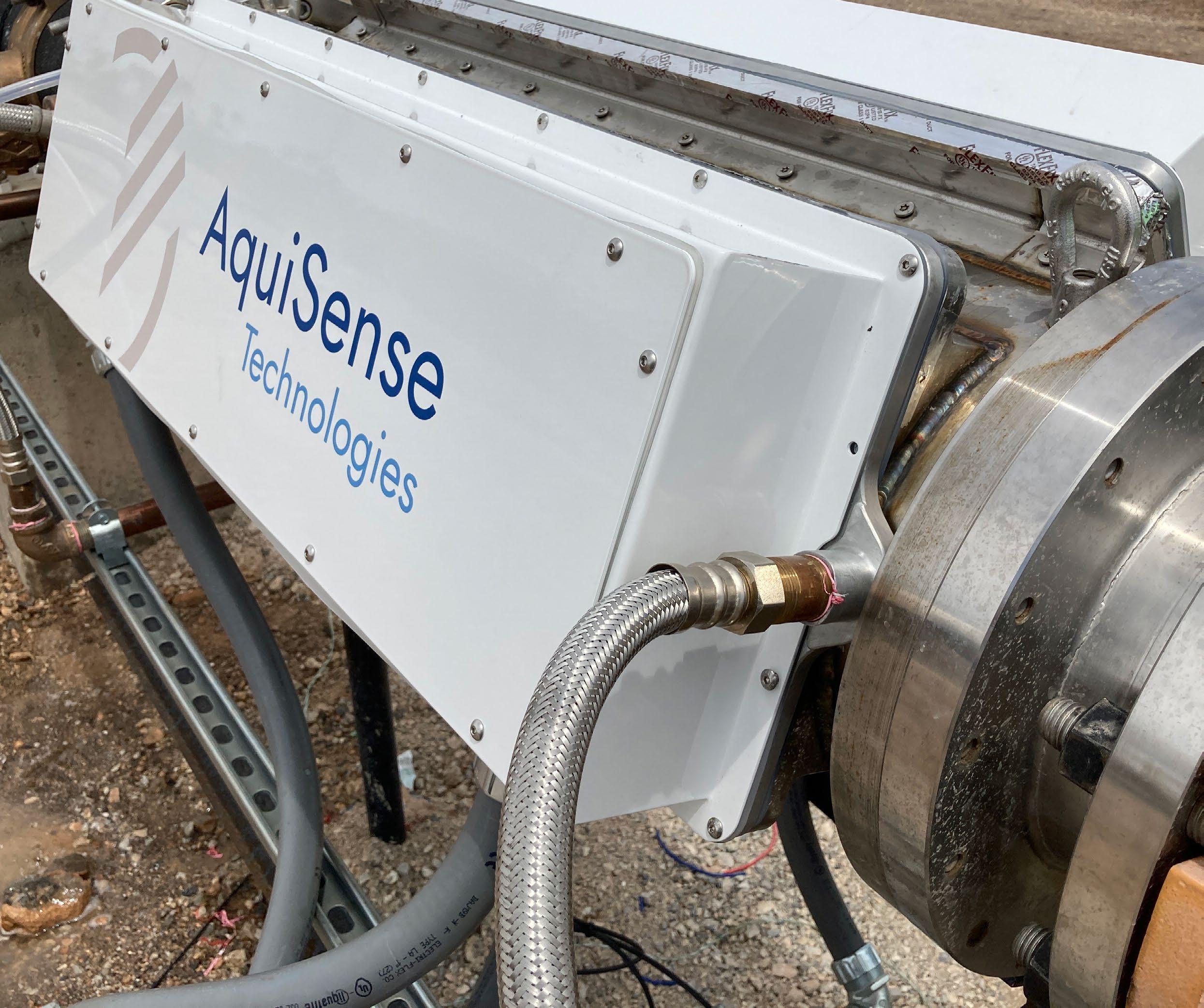

With a background in cancer research, John Higley has become one of the darlings of Austin’s biotech scene and a recognized pioneer in the aquatic ecosystem testing & monitoring industry. We caught up with Mr. Higley to learn about how EQO is playing a role in the movement to democratise tools that help industry and society understand water-related risks.


Surface and ground waters (i.e. aquatic ecosystems) are losing biodiversity and becoming under threat at an alarming rate. This stems from invasive species, climate change, pollution, and general biosecurity risks like Harmful Algal Blooms. This problem goes beyond simply ‘protecting the environment’ - sick lakes are a drag on economic development, and a risk for commercial fishing, recreation, and public health & safety.
The world’s surface water bodies are becoming increasingly ‘sick’, and a biotech company that understands the application of eRNA and eDNA for detection, diagnostics, and monitoring can help return them to good health. Our mission is to become the biotech market leader in helping owners or operators manage health risks of their lake, reservoir, or other aquatic ecosystem assets.
We have two types of customers. The first customer is environmental and civil engineering firms who bring EQO’s detection, diagnostics, and monitoring solutions into their customer’s projects, who can be public or private sector entities. We also have many end-users, such as government and academic institutions, who rely on EQO’s offerings directly. Currently our customers are all in North America,
but we do get inquiries from around the world and plan to expand internationally via partnerships in 2024.
While not our biggest customer, the City of New York has brought EQO in to support their efforts to manage biosecurity threats facing their drinking water supply. In terms of revenues, our largest customers are consulting engineers such as SWCA.
Not exactly. We are an advanced biotech company that operates in any market where water is an issue of primary importance. While we do have drinking water utility customers like the City of New York, it's more accurate to say we operate in the aquatic ecosystem testing & monitoring industry.
There are four key markets: Utilities/Public Health & Safety, Conservation, Commerce & Industry, and Recreation. There are public and private sector ‘owners’ of water assets spanning all four. Consider a municipally owned beach, this is not necessarily the responsibility of the water/wastewater utility, rather, someone overseeing health and human services or public health and safety in city hall. A wetland upstream from a town is closer to environmental protection and conservation than the water industry.
Yes, we are starting to work in oceans. However, most of our experience has been in freshwater lakes, ponds, reservoirs, rivers, creeks, and estuaries.
The management of wetlands represents one of the most exciting realms for EQO’s tech to be employed. It is a challenge to monitor species like
Continued on page 22
“As the atmosphere warms, surface water assets are undergoing changes in chemistry and food chain, resulting in a wide range of ‘health’ concerns. EQO’s offerings support detection, diagnostics, and monitoring to help industry and society manage water quality risks induced by climate change.”
salamanders or pre-yearling salmon, and increasingly important to detect invasive species that need to be addressed before they become a larger problem. We bring efficiencies that the wetlands and broader conservation industry could only dream of a few years ago.
We offer two unique field sampling solutions. The Osprey is ideal for our customers who need a mobile diagnostics solution to monitor multiple locations around their water assets. The Calypso is ideal for our customers who need a fixed detection, diagnostics, and monitoring solution to manage critical infrastructure associated with their surface water asset. Both offerings should be thought of as an extension of our lab in Austin, Texas – which is where the magic happens.
Our IP can be viewed as a breakthrough in the application of eRNA and eDNA sampling, except instead of focusing on human health outcomes, we are focused on the health of aquatic ecosystems. Complementing our sampling solutions are our lab services, which include NGS, Microarray, qPCR, and our capabilities in bioinformatics and metagenomics. There is no company that we know of that is able to do what we do, especially in the world of transcriptomics.
We don’t have any direct competition, but there are other start-ups with innovations in field testing, and labs who offer similar solutions to EQO. Yet, no company offers a strategic blend of the two like we do. We are actively looking to partner with other innovative lab testing technology companies.
We expect to see around US$850,000 in ARR, in 2023, and hopefully realise over US$4M in 2024. Our margins in this business are very competitive.
We launched our US$3.5 M Series A fundraising efforts on March 1, 2023, and we are expecting to finalise by May. For investors who operate at the intersection of biotech, conservation, and public health & safety, this is an investment opportunity worth serious consideration. We are already in talks with corporates who will accelerate our efforts to reach a global customer-base in the coming years.
Innovations in eRNA and eDNA have been around for decades, however, it cost a fortune to utilise these tools, mostly utilised by large public-sector backed studies and projects. EQO has brought the cost down to a level that almost any owner, operator, or consultant can employ to understand the health of their surface water asset. Also, traditionally lab reports were complex, requiring additional cost in hiring a consultant to make them actionable. EQO has reimagined the reporting side of lake health management, offering improved visibility that people with non-technical backgrounds can understand.
EQO is an Austin-based bio-tech company leveraging biotechnology to help manage aquatic ecosystem health. EQO’s innovations are already rendering many incumbent testing & monitoring tools irrelevant.
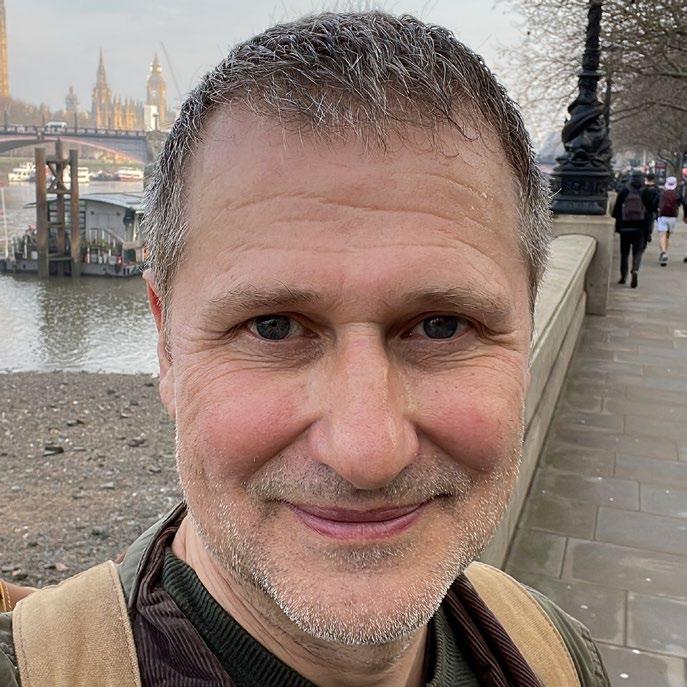

Kando is at the forefront of the digital transformation of wastewater management, keeping the world’s sewage systems hygienic and high functioning, as well as helping save economic and environmental resources while bolstering public and environmental health. Through collecting data, and transmission with cloud-based AI data analytics, Kando provides an innovative solution that enables water utilities to know what is going on In the city, be able to reuse their wastewater , to operate their wastewater management system, detect potentially harmful contaminants as they enter the sewers, and identify both known and unknown sources of events that impact our health and environment.
Water is a natural resource and belongs to all of us. It is the wellspring of life and essential to all of our activities as human beings. In return, we have a shared responsibility to use it wisely, to exercise good stewardship, and to preserve access to plentiful water for future generations. To do so, we need to make good, informed choices – about consumption, conservation, and re-use – and access to data for all is vital. Better data drives better choices, which drive a better future.
The water utilities that manage our water supplies are undergoing a digital revolution that places data at the heart of water management. Working with Data and AI partners, utilities will be able to take advantage of the many dissemination platforms (the internet, social media, etc.) to place more and better data into the hands of water consumers. Water data can empower authorities to make proactive decisions capable of changing individuals’ behavior, and it’s vital that as many relevant data points are shared with decisionmakers so that they can ensure that medical and environmental policy measures are achieving their desired effect.
At Kando, we are proud to be a part of the digital revolution and to be helping our clients uncover the data that connects and correlates with to the big environmental and social challenges of our era. Kando’s technology offers water utilities and decision makers the potential to eliminate guesswork from the water management and treatment processes. The improved connectivity enabled via Kando’s digital technology makes wastewater data more accessible to all to protect our communities’ health and environment.
We caught up with Andrew to discuss how Kando are using digital tools to unlock valuable insights from wastewater.
Our ultra low powered, multi-parameter, MetriNet smart water quality monitor delivers a modular solution for generating reliable and continuous data within distribution networks. With 16 parameters to choose from, the MetriNet telemetry bollard offers a secure and serviceable street level monitoring solution with less hostile environmental conditions, prolonging the life of the monitoring asset. Creating intelligent, optimised, smart water networks of the future with MetriNet. analyticaltechnology.com

Boeh Agency is a marketing and PR agency that exclusively serves the water industry. Its experienced team develops integrated programs, starting with a strategic marketing plan to ensure its clients’ marketing budget is wisely spent. The firm develops content that resonates with the target audience - whether it’s a consulting engineer, a plant operator, or a potential investor.
We caught up with Beth Boeh, President and CEO, to find out a bit more about the ways in which they support their clients along the digital transformation journey.
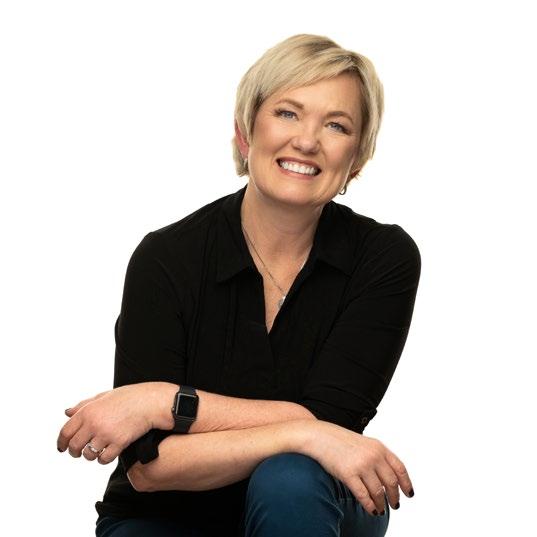
As an agency that has been working in the water sector for many years, have you noticed an acceleration of digital transformation? If so, how have digital technologies changed your clients business?

For most of the 27 years that I’ve personally served the water industry, the transformation has felt quite slow. I’d say we’ve evolved more in the past 5 years than the 20 before that.
COVID-19 has dramatically accelerated everything digital including our clients’ innovative treatment portfolios that increasingly incorporate AI and smart technologies to leverage digital tools that improve the value to their clients.
Our clients, like us, are also wrangling more and more tools in our tech stack to improve operational efficiencies and deliver a better product or service at a competitive price.
Zoom. Teams. Loom. Zoho. Hubspot. Google. Chat. This strange 21st century language is connecting us in ways that earlier in my career were nearly unthinkable. For example, I remember I was anticipating the birth of my second child while working for a large, multinational water services company and decided I wanted to work from home to minimize time spent commuting. While I had earned trust and credibility after 8 years with the company, it still took a pitch presentation to the CEO - still rungs above me on the corporate ladder
- to convince them. Even with thousands of employees working internationally, in the days of VoIP and laptops, I believe I was the first - or close to the first - remote worker in the company.
Now, almost 20 years later, my team - admittedly, far less than thousands of people - is 100% decentralized. And many of our clients, while maybe not completely remote, are virtual/office hybrids, using the tech tools to get the job done anywhere, anytime. Unheard of in this industry not too long ago.
What do you think are some of the challenges your clients have faced on their digital transformation journeys?
Nobody has accused the water industry of being an early adopter! When dealing with public health and safety and the most valuable resource on the planet, there’s not a huge appetite for risk. Add to that an aging workforce, and transformation doesn’t always come easy. I’ll admit that’s a pretty egregious generalization, but I do think we have historically been slow to embrace change.
What role does marketing play in supporting the communication of digital transformation?
Marketing, of course, is all about communication! When communication can be fast, targeted and measurable…well, what’s not to love? In the earlier days, getting clients to see the value of diversifying away from print ads and postcards was a heavy lift - “but we’ve always done it that way”. Today, nearly all our clients lean savvy, using modern digital tactics to market cutting-edge innovations to help preserve and protect precious water. It just makes sense.

Water leakage is a huge problem for utilities. That is why Echologics, a division of Mueller Water Products, has launched a new solution to give operators the insights they need to manage their networks more efficiently and sustainably
Leakages in water networks are a waste of valuable water resources and can cause significant damage to pipelines and surrounding infrastructure - a major headache for utility owners and operators. Critical to mitigating water leakage is visibility in the network and the insights to act quickly and effectively. This is exactly what Echologics, a division of leading manufacturer and marketer of water-related products and services, Mueller Water Products, aims to provide with the launch of the new EchoShore®-DXe acoustic leak monitoring sensor.
EchoShore-DXe sensors deliver actionable alerts about emerging and existing leaks to help control your water network, identify leaks early, and monitor their progression so that you can prioritise repairs intelligently. The sensor can attach to virtually any access point in a water distribution network – and works in tandem with the EchoShore-DX hydrant-based sensors – so utilities can get coverage where they need it. With a network of EchoShore-DXe sensors, operators have visibility into their distribution mains at all times. Not only can they identify leaks before they cause an issue, utilities can get useful information quickly and regularly that help them better manage their water assets.
“In addition to reducing water loss, the EchoShore-DX system also helps utilities protect their local communities by addressing environmental concerns while providing important information that assist utilities in
reducing the risk of catastrophic breaks within their distribution networks,” said Kenji Takeuchi, Senior Vice President of Water Management Solutions. “Now, utilities around the world can enhance their water loss programs with our advanced technology, multi-dimensional analysis, and the Sentryx™ Water Intelligence platform – our user-friendly, secure software interface.”
EchoShore-DXe sensors attach magnetically to various appurtenances, including valves, boundary boxes, and underground hydrants. They perform a scheduled, system-wide correlation to monitor, detect, and locate leaks – even small and growing leaks.
“Backed by our advanced algorithms and dedicated analysis team, our solution can detect emerging leaks in monitored areas, which increases validated leak alerts,” said Takeuchi. “In addition to delivering reliable leak alerts, our technology also helps accurately locate leaks, so utilities can save time in their investigation and repair work.”
Like the hydrant-based EchoShore-DX sensors, the valve-based EchoShore-DXe sensors have a battery life of up to 10 years and support communications via LTE Cat-M1 and Narrowband Internet of things (NB-IoT) networks. Both the hydrant-based and valvebased sensors work together to provide enhanced sensitivity and reliability.
Tell us about your company:
At Ovarro, we connect big data to make a big difference. Our technology drives situational awareness. Improving security, productivity, safety and operations one data point at a time.
How is your company driving the digital transformation of water management?:
We are connecting technologies to enable millions of people to have access to safe drinking water.

Do you think it’s important that everyday citizens have access to data about the water they use?:
Water is an essential life source and providing a system of safe and sustainable water management is critical in the fight against climate change.
How do you think we can accelerate the democratisation of water data?:
Ovarro technology has been designed to enhance situational awareness by enabling data collection, connecting technologies to provide you with trusted insights to make business-critical decisions. Our products integrate seamlessly with your assets to increase operational efficiency and effectiveness,
supporting you in your goal to reduce leakage and pollution incidents.
What is your organization doing to accelerate either digitisation, democratization, or both?:

We understand that the pressure on water authorities around the world to drastically reduce leakage has never been greater and we are committed to providing reliable and robust solutions to reduce asset replacement frequency, allowing you to reduce your CAPEX. Our teams will collaborate with you to support your strategic development and build a sustainable future for industries and communities around the world.
Our new end-to-end solution LeakNavigator for locating water leaks will help you minimise input and maximise efficiency. LeakNavigator also saves you from wasting hours on analysis of leak information. Unlike other leak location products, it is a fully managed end-to-end service that minimises your input.
 Joseph Vesey, Former Senior Vice President & Chief Marketing Officer of Xylem Inc.
Joseph Vesey, Former Senior Vice President & Chief Marketing Officer of Xylem Inc.

The water industry has a key role to play in ensuring access to safe and clean water for domestic, industrial, and agricultural purposes. It is responsible for managing and distributing water resources, including groundwater, surface water, and alternative sources of water to meet the demands of its users.
The global industry structure, however, is highly fragmented, with over 400,000 utilities, 80% of which serving populations with less than 5,000 people, according to Bluefield Research. What’s more, utilities are plagued by challenges such as ageing infrastructure, water quality, and climate change induced flooding and droughts.
Faced with these realities, utility leaders are increasingly demanding interoperability across their technology stack, enabling them to gain insights to solve the many challenges they encounter each day. However, water technology vendors have struggled to deliver on this interoperability ‘call to action’ which has invited a new industry participant into the water sector: API (Application Programming Interface) first companies.
Water technology vendors are first and foremost focused on developing digital solutions for mission critical applications across water, wastewater and stormwater. These solutions can range from customer service solutions, asset management, source water quality, water and wastewater treatment, and resource management to name a few. Water technology companies prioritise engineering time towards developing differentiated digital solutions to scale at the application level.
For instance, if one technology company is building a wastewater treatment digital solution, they will want to scale that across all wastewater treatment applications in the market. When those digital solutions require connections to systems or software from other vendors, the IT competency is more geared towards writing code to drive manual point to point integrations.

These manual integrations are costly, difficult to manage and even harder to maintain as each new integration requires you to start from the beginning as opposed to reusing prior integration code. These quickly become complicated spider webs of IT complexity, which is why you typically see more formal partnerships setup on integrations covering limited participants in one area of the digital utility to another. This presents a Sophie’s choice for the utilities: buy a packaged digital solution that is stable on integrations but might not produce the best outcomes and/or produce tech debt from previously purchased technology, or, ask the water technology vendor to build out additional integrations to best of breed systems which might drive up costs and overall system stability.
Water utility CIOs are challenged every day to keep their existing IT and OT (Operational Technology) systems running supporting the critical mission to deliver water and wastewater services. They often are solving individual challenges with SCADA (Supervisory Control and Data Acquisition) which
are controlling RTUs (Remote Terminal Units) and ICSs (Industrial Control Systems) throughout the plant. They typically do not have the resources and expertise to build out integrations or deploy APIs to pull data together across their technology stacks. They rely on their water technology vendors or other technology providers to come with those capabilities and execution.
API-first companies have emerged in other industries as an important layer within the digital technology stack. These include MuleSoft, Apigee, Boomi and Merge to name a few. They specialise in building out, at scale, unified API’s and the subsystem API capabilities such as webhooks to deliver a seamless and simple integration of one system to many systems. They do this by engineering connector ‘building blocks’ which can be reused across many integrations, allowing for a low cost and simple way to scale. They have also built robust tools to automate the network of connections which ultimately emerges.
These API-first companies deliver on this because they have a core competency in building digital connections across many IT and OT systems vs. water technology companies who have a core competency in building digital solutions to solve water or wastewater process challenges. This ‘scaled connection’ capability in the market then allows customers or utilities to equally consider a ‘best of breed’ or ‘one stop shop’ approach to procuring digital solutions delivering better and better outcomes for the community.
To accelerate digitisation and deliver on interoperability across a water utility with dozens of different technologies, an engineered API-first approach vs. a manually coded point to point integration is the best path. As pure-play API-first companies enter the water space, or API-first water technology companies emerge, the ability to accelerate and deliver on the interoperability needs from utility leaders will be met.
API-first companies will contribute with a focus to deliver more robust, secure and scalable integrations across hundreds and hundreds of systems and data sets. This will allow water technology companies to focus and contribute to building next generation digital solutions around hydraulic models, hydronic heating, hydrology, treatment mechanisms or other operational processes across water, wastewater or stormwater.
H2O Global News is passionate about applauding those who turn their ambitious ideas into reality, and for this issue we’re excited to bring your attention towards 10 venture-backed early-stage companies run by founders who have demonstrated fearless creativity by building something from nothing.


Conservation Labs
Founder and CEO
mark@conservationlabs.com | www.conservationlabs.com
Company next milestone: We invented a way to make a microphone understand water flow with machine learning. H2know fits over a pipe to measure and classify water. H2know helps reduce water use with high-resolution insights; it provides peace of mind by identifying risk factors for leaks and issuing alerts for catastrophic leaks.
ElectraMet
cameron.lippert@electramet.com | electramet.com
Company next milestone:
1) Close Series B financing
2) Complete install at EV battery recycling plant
Sara De Moitié
Gybe
Founder and Chief Product Officer
sara@gybe.eco | gybe.eco
Company next milestone: Gybe provides the information needed to effectively safeguard and manage water resources, and build climate resilience. We help customers like water utilities interpret and visualize water quality at the basin scale. In our next milestone, we’ll incorporate and fuse new datasources, vastly expanding the operational product benefits for our customers.
Hydraloop
CMO & Co-founder
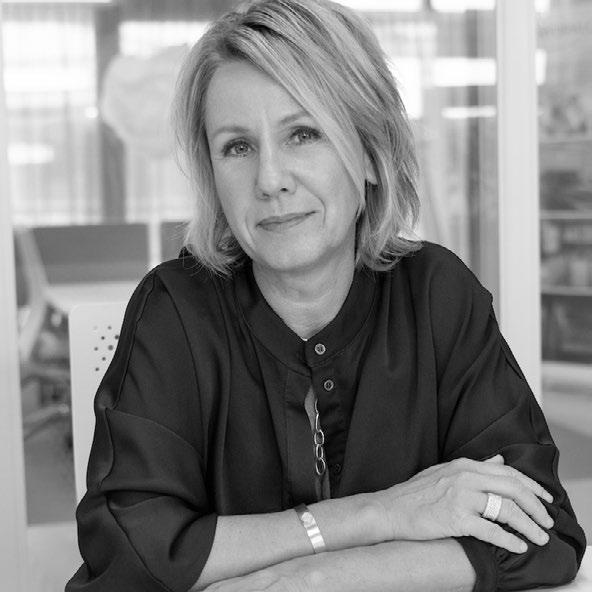


s.stuiver@hydraloop.com | hydraloop.com
Company next milestone: Raising capital for expansion, key focus on Middle East, USA and Australia.
Expanding the team, now >50 staff: offices in The Netherlands (HQ), Middle East, US and business units in Canada and Australia. Growting the partner network now >130 partners in >50 countries. Decentralized assembly lines in US and Middle East.
jeff@keto-ai.com | keto-ai.com
Company next milestone: We are launching the world’s first autonomous swimming pool management system in April 2023.
Devesh Bharadwaj Pani Energy CEO
devesh510@panienergy.com | pani.global
Company next milestone: Continuing our recent growth of doubling the team size and increasing the number of facilities signed up to use our product by over 2,000%, Pani is working towards the mission of reducing global emissions for water and wastewater processes by 510MT/year by 2032. Our next milestone is revamping the product to lead the process operations AI category.
Reuben Vollmer Spout CEO

reuben@spoutwater.com | spoutwater.coml
Company next milestone: In April, we’re launching a new countertop appliance that harnesses 2 gallons of water a day from air, with the smallest footprint and price for its category, designed by a group of people that built the Nest Thermostat, for a more elevated design.

pchristou@swirltex.com | swirltex.com
Company next milestone: Swirltex has constructed Canada’s largest membrane produced water treatment plant and has succeeded in an industry where many other membrane technologies have failed. Swirltex is also building the world’s largest coal wastewater treatment plant, where it will enable more than 3 million liters per day of water reuse.
Ari Raivetz Transcend Software Founder and CEOaraivetz@transcendinfra.com | transcendinfra.com
Company next milestone: Continuing to spread the adoption of generative design to water utilities, technology OEMs, and engineering firms. We grew 3x in 2022 and expect to more than double in 2023, all while seeing continued growth in adoption/ usage from existing clients.
Chris Sosnowski Waterly & WaterClick CEO & Co-Founder

chris@waterclick.tech | waterlyapp.com
Company next milestone: There are about 165,000 public water and wastewater systems in the US. It’s ambitious but not impossible: We want to be supporting 1% of them by the end of 2023.
Date: 9th - 11th May 2023
Location: Glasgow, Scotland, UK
The SWAN 13th Annual Conference will be held May 9-11, 2023 at the Crowne Plaza Glasgow in Scotland. How do we move the industry from early adopters to the early majority? Our theme, “Making Smart Water Mainstream” will focus on the practical, “how to” value of taking the smart water journey by navigating through current, global utility challenges.
Date: 16th - 17th May 2023
Location: Birmingham, UK
Utility Week Live, the UK’s only pan-utility exhibition, will return to Birmingham’s NEC on 16 - 17 May 2023 to drive collaborative innovation, and support strategic, technical, and operational professionals in solving critical business challenges.
Date: 11th - 14th June 2023
Location: Toronto, Canada
ACE, where the water community comes together to learn, connect, and be inspired to solve global water challenges. There is a priceless value in connecting with your peers in person. A palpable energy comes from the exciting innovation in the exhibit hall, and sessions pulsate with conversations that are a catalyst for change. Regardless of where you are in your career, there is something for everyone at ACE.
Date: 4th - 5th July, 2023
Location: Manchester, UK
The EWWM Conference provides an essential annual update on the latest innovations, best practice, cutting-edge technology and research in the wastewater sector.

Date: 30th September - 4th October, 2023
Location: Chicago, Illinois
There is no better place than WEFTEC to meet water professionals from around the world and experience first-hand the best in water quality education, leading experts, the latest technology and trends, and proven solutions.
Thank you to our advertisers:
THE IVAPPS BODY KNOWN AS THE PORTAL , ACCOMMODATES BOTH
THE SMART CARTRIDGES AND VALVE CARTRIDGE OFFERING A UNIQUE SUSTAINABLE SOLUTION TO FLUID SYSTEM MONITORING, SUCH AS POWER OPTIMISATION, PRESSURE MODULATION AND LEAK DETECTION.
